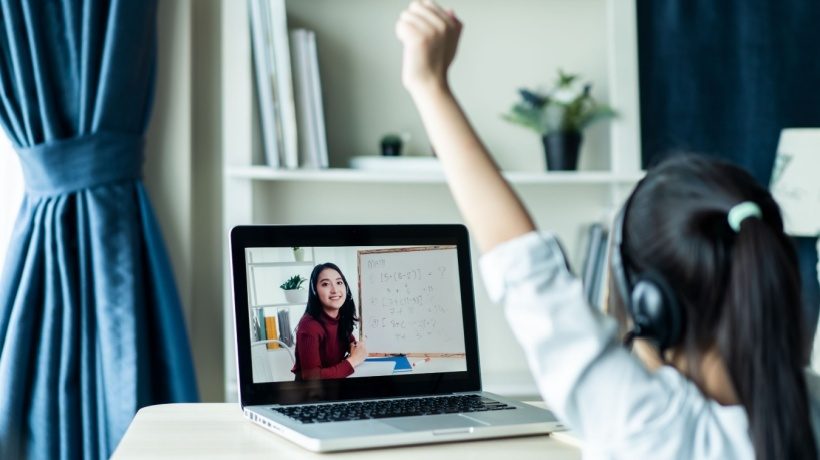Teaching Strategies For Engaging Online Learners
As more and more learning takes place online, educators are faced with the challenge of keeping students engaged and motivated. With traditional teaching methods not always applicable in an online setting, educators need to adapt and find innovative ways to make their online courses more engaging and interactive. In this article, we will explore seven innovative teaching strategies that can help educators engage their students in online learning.
7 Innovative Teaching Strategies To Engage Students Online
One effective strategy is to incorporate multimedia content into the online learning experience. This can include videos, podcasts, infographics, and other interactive elements that help students to visualize complex concepts and engage with the material in a more dynamic way. By using multimedia, instructors can create a more immersive and interactive learning experience that is tailored to the needs of each individual student.
Another strategy is to foster peer-to-peer engagement through online discussion forums and collaborative activities. By giving students the opportunity to engage with each other in a virtual setting, instructors can create a sense of community and support that is essential to successful online learning. Discussion forums can be used to facilitate group discussions, debates, and peer feedback, while collaborative activities can include group projects and peer-to-peer evaluations. By incorporating these activities into the online learning experience, instructors can help to create a more dynamic and engaging learning environment that promotes active participation and collaboration among students.
Gamification
Gamification is the use of game design principles in non-game contexts to engage and motivate users. In an online learning environment, gamification can be used to create a more interactive and engaging experience. This can be done through the use of badges, leaderboards, and other game elements that can help motivate students to complete assignments and engage in the learning process.
Collaborative Learning
Collaborative learning is an effective way to engage students in online learning. This strategy involves students working together to complete assignments and solve problems. This can be done through the use of discussion forums, group projects, and online collaboration tools. Collaborative learning can help students feel more connected to their classmates and can also help them develop important communication and teamwork skills.
Personalized Learning
Personalized learning involves tailoring the learning experience to the individual needs and interests of each student. In an online learning environment, personalized learning can be achieved through the use of adaptive learning technologies and learning analytics. This can help educators identify the strengths and weaknesses of individual students and create personalized learning plans to help them achieve their learning goals.
Flipped Classroom
The flipped classroom model involves students learning the course material outside of class, typically through online lectures and readings, and then using class time for discussions and interactive activities. This model can be particularly effective in online learning environments, where students have more flexibility in when and where they complete their coursework. The flipped classroom model can help students develop critical thinking and problem-solving skills, as well as facilitate more in-depth discussions and interactions with classmates.
Interactive Assessments
Interactive assessments are a great way to engage students in online learning. These assessments can take many forms, including quizzes, games, and simulations. Interactive assessments can help students retain information and test their understanding of the material in a more engaging and interactive way. This can also help educators identify areas where students may be struggling and provide additional support and resources.
Encourage Collaboration
Online learning can be isolating for students, but collaboration is an essential part of the learning process. Encourage students to work together on projects and assignments using online collaboration tools like Google Docs or Zoom breakout rooms. You can also create group discussion forums or virtual study groups to foster a sense of community among your students.
Provide Personalized Feedback
One of the challenges of online learning is providing personalized feedback to each student. However, providing feedback is crucial for student learning and engagement. Use digital tools like screen recording or voice comments to provide feedback on student work. You can also schedule one-on-one virtual meetings with students to discuss their progress and provide individualized support.
By implementing these innovative teaching strategies, you can create a more engaging and interactive online learning environment for your students. Remember, online learning may be new to many students, so it's essential to be patient, flexible, and supportive as they adjust to this new mode of learning.
Online learning provides students with the flexibility to learn from anywhere, at any time. However, this flexibility also presents a challenge for teachers to keep students engaged and motivated, especially when it comes to the most prestigious universities in the UK. To address this challenge, educators need to implement innovative teaching strategies that promote active learning and interaction.
Conclusion
In conclusion, online learning presents unique challenges for educators, but with the use of innovative teaching strategies, it is possible to engage and motivate students in the online learning environment. Gamification, collaborative learning, personalized learning, flipped classrooms, and interactive assessments are just a few of the many strategies that educators can use to create a more engaging and interactive online learning experience for their students. By adopting these strategies, educators can help their students achieve their learning goals and prepare them for success in the twenty-first century.









